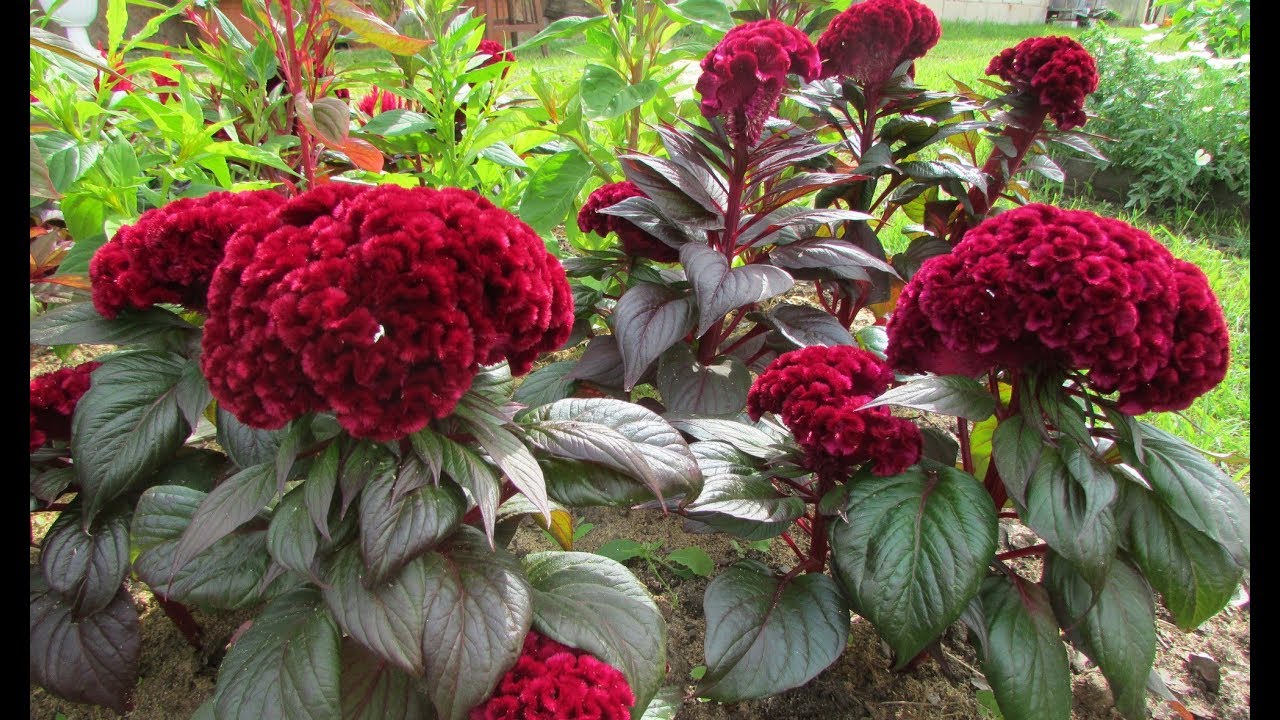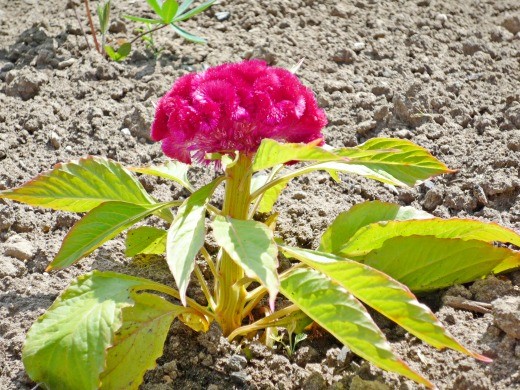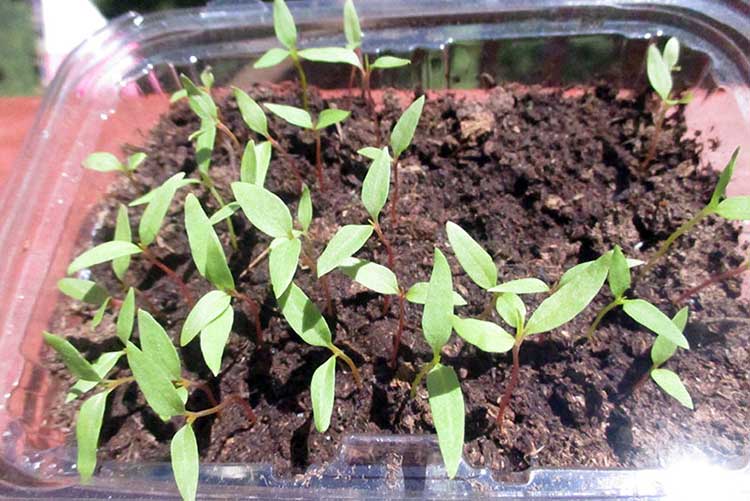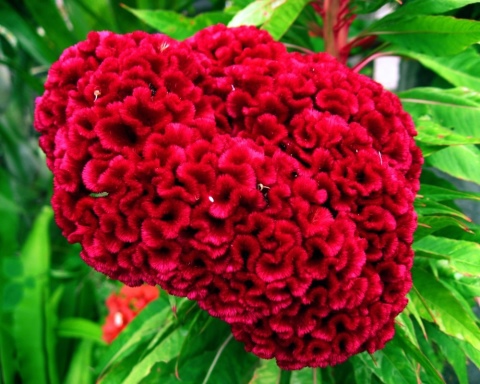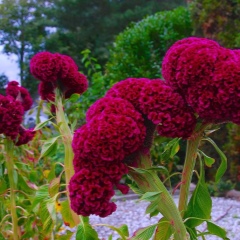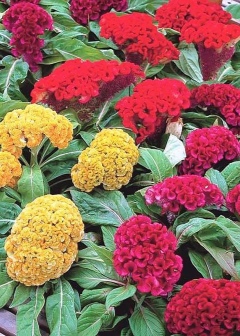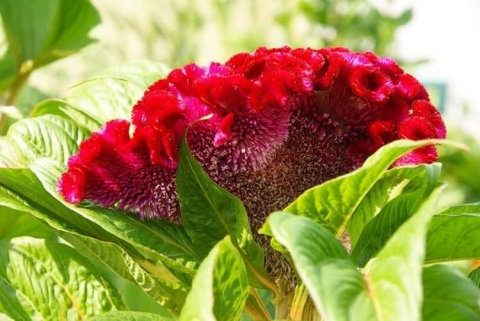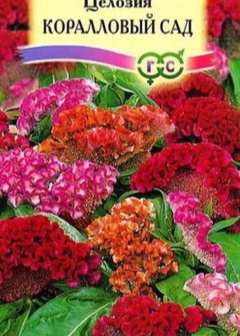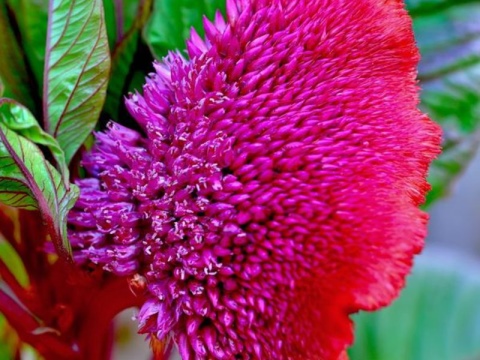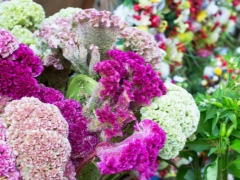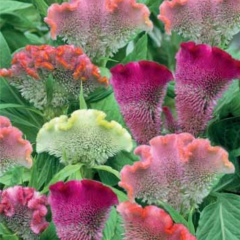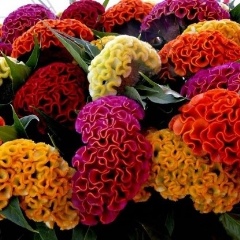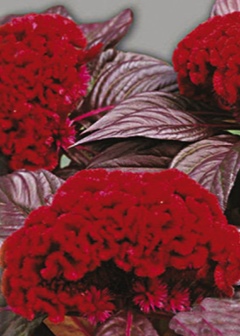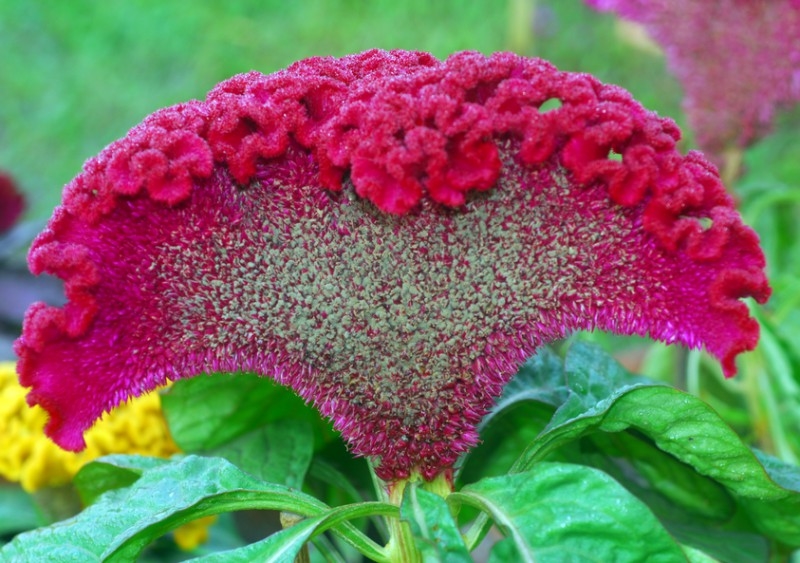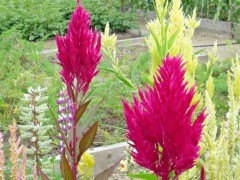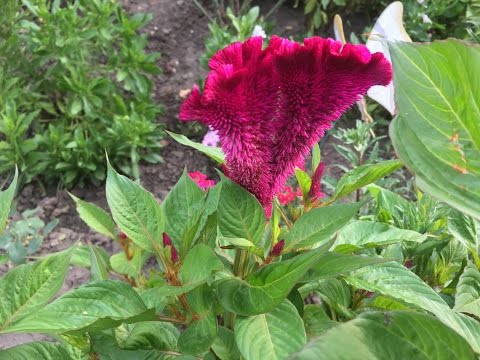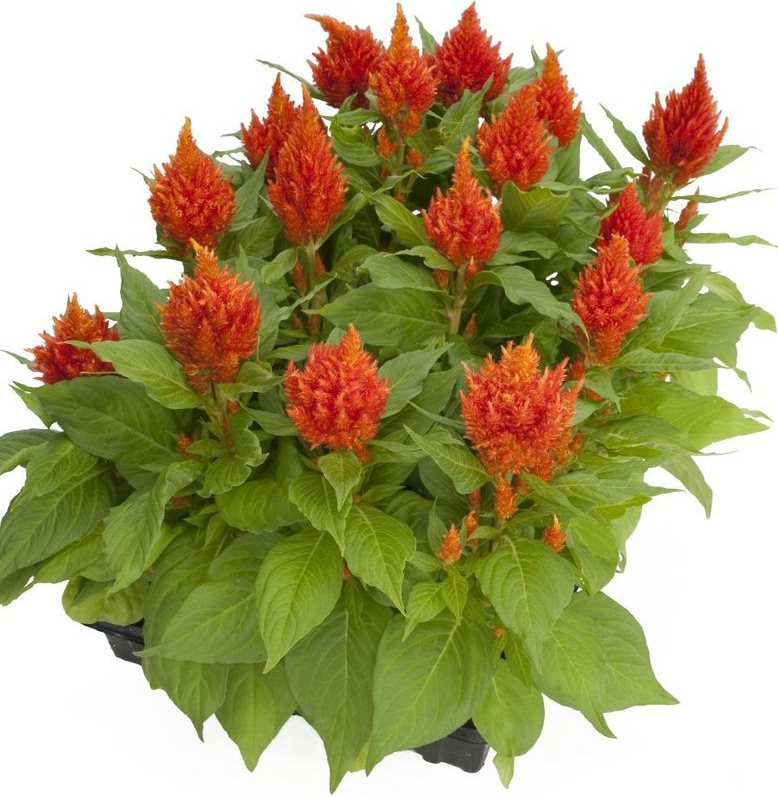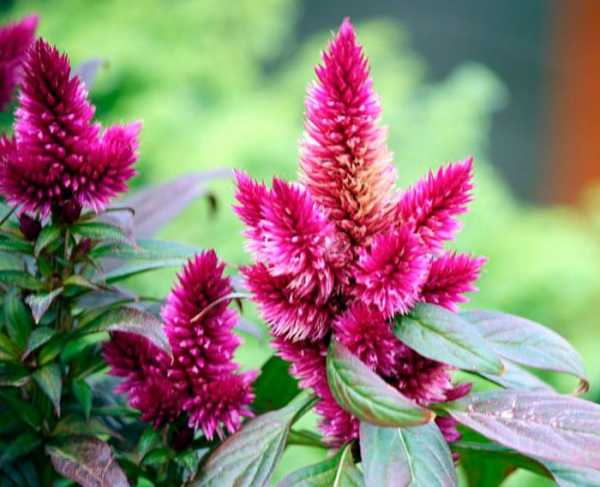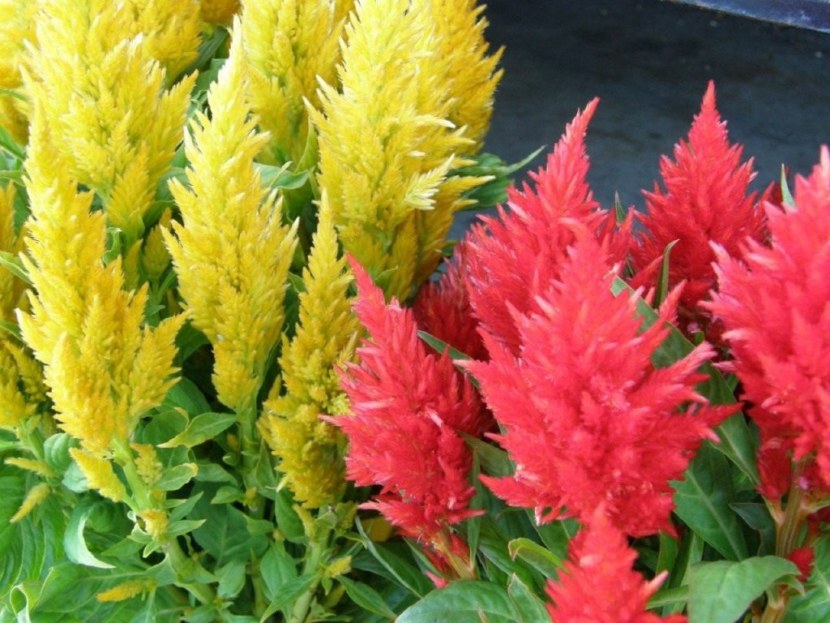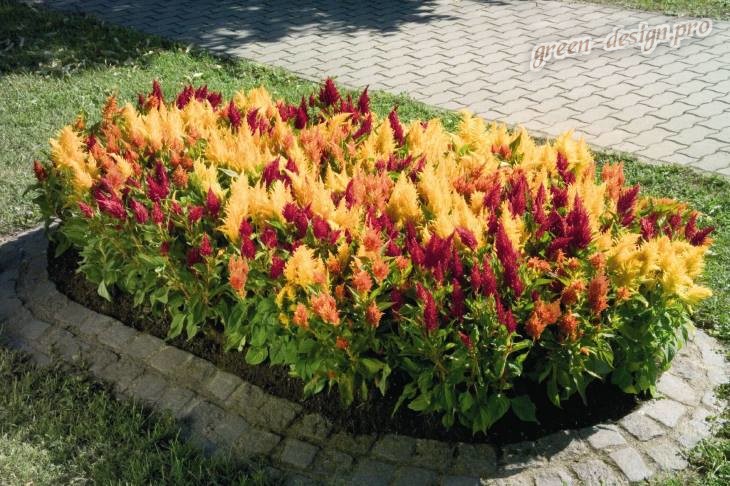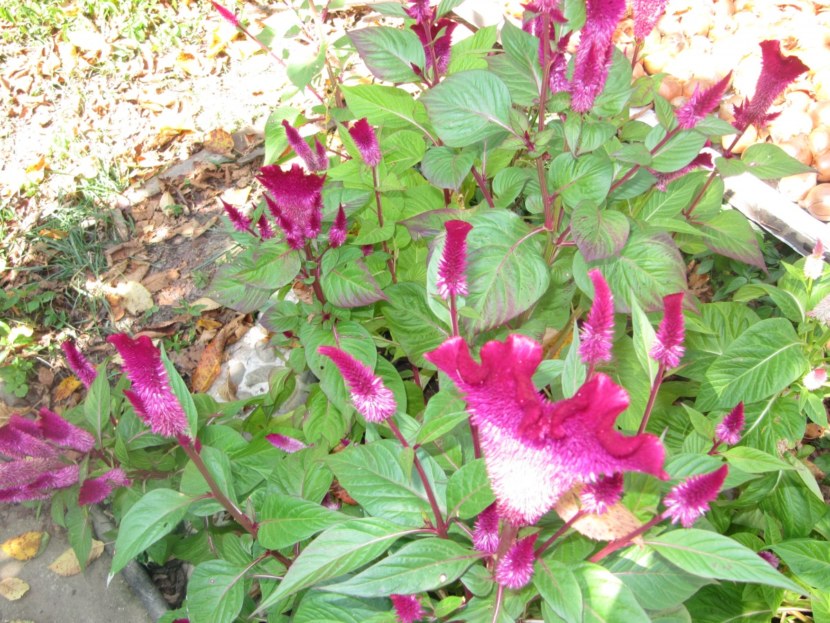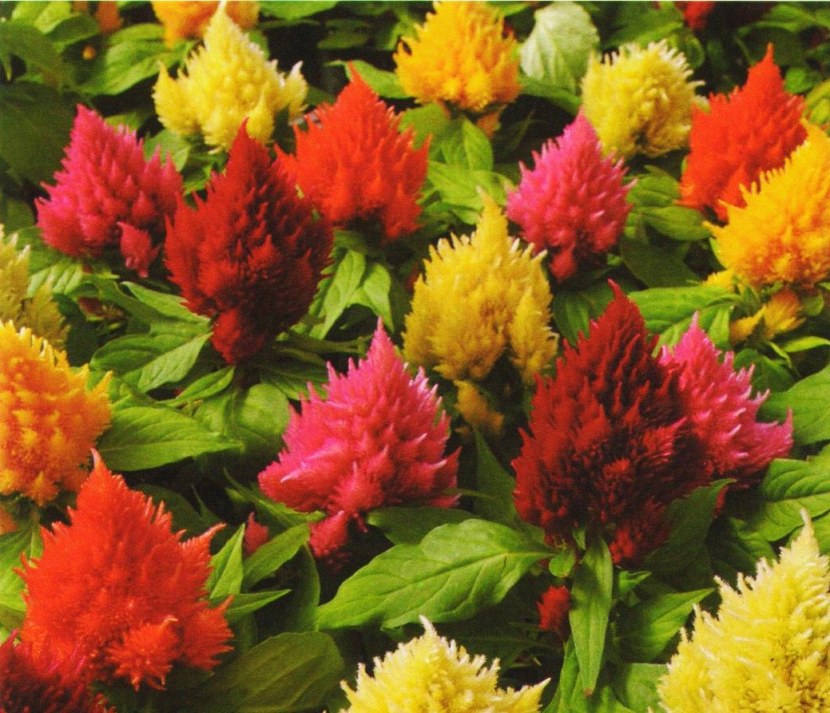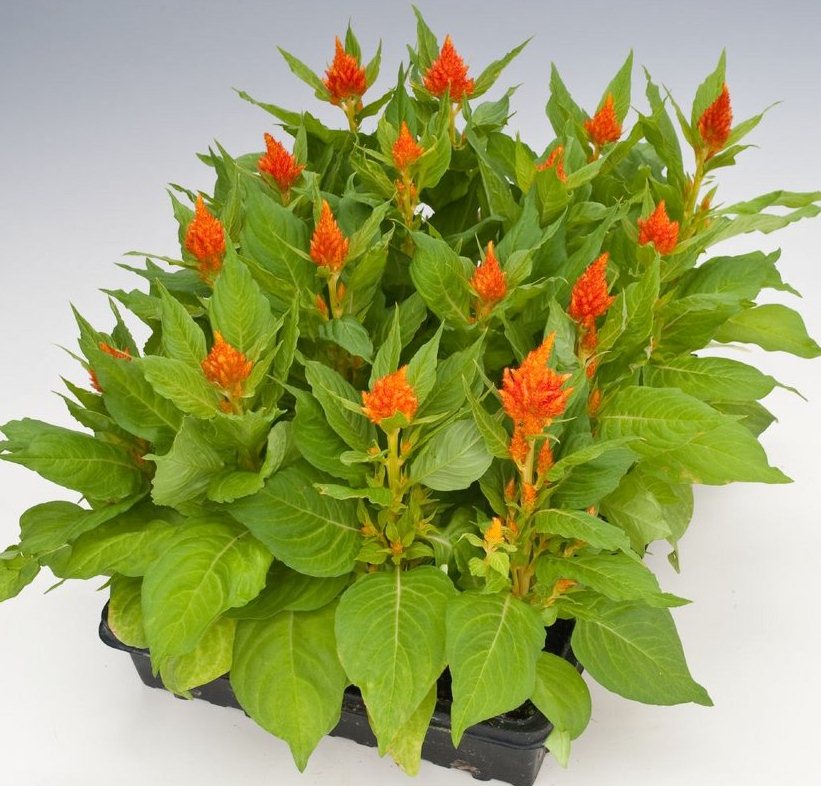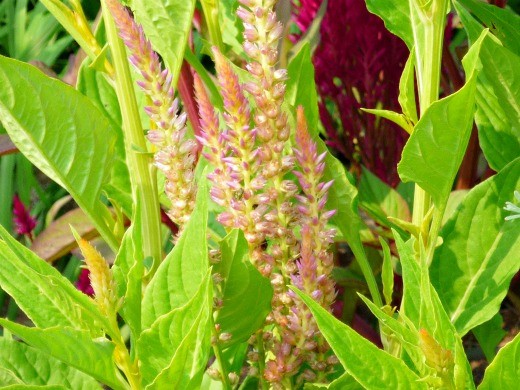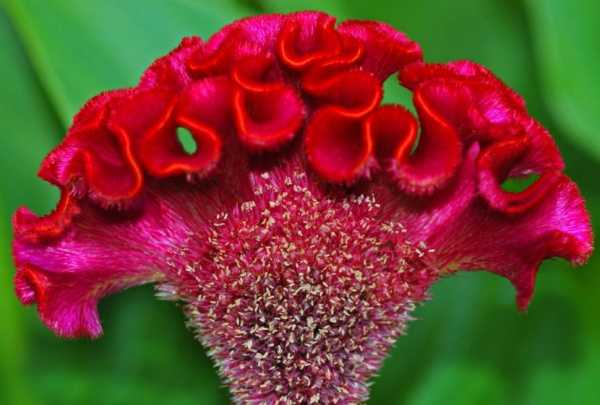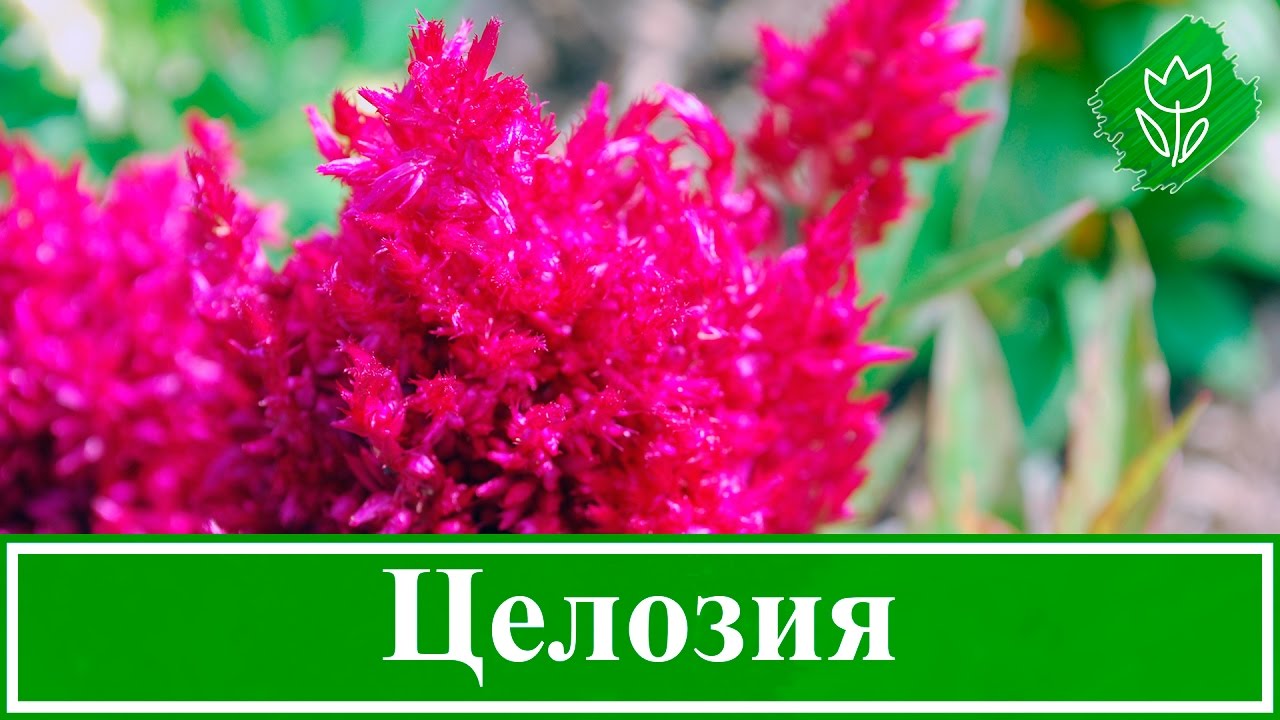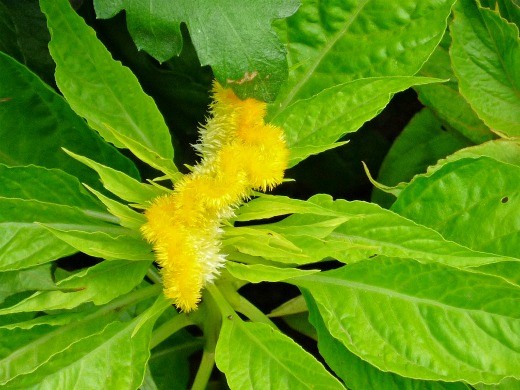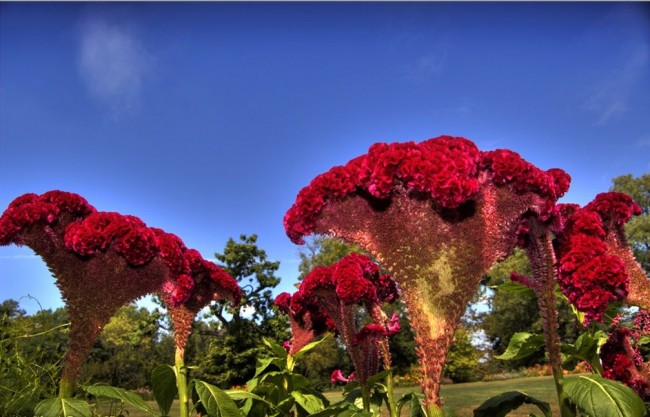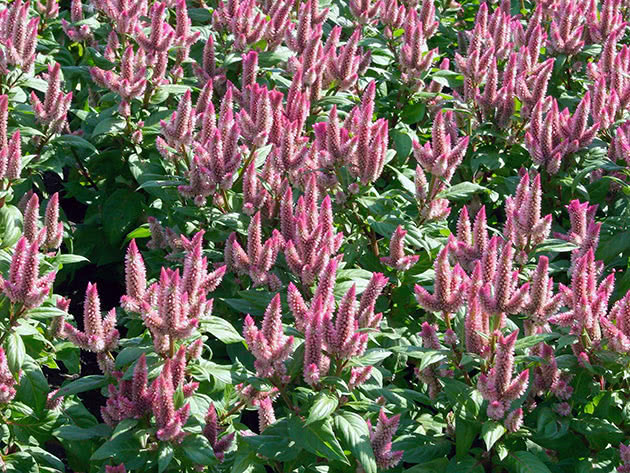Landing
Many flower growers are in love with this flowering herb, so every year it becomes more and more popular. Now consider and remember how to plant correctly? You need to plant on rich, well-drained soil, which has already warmed up in the spring.
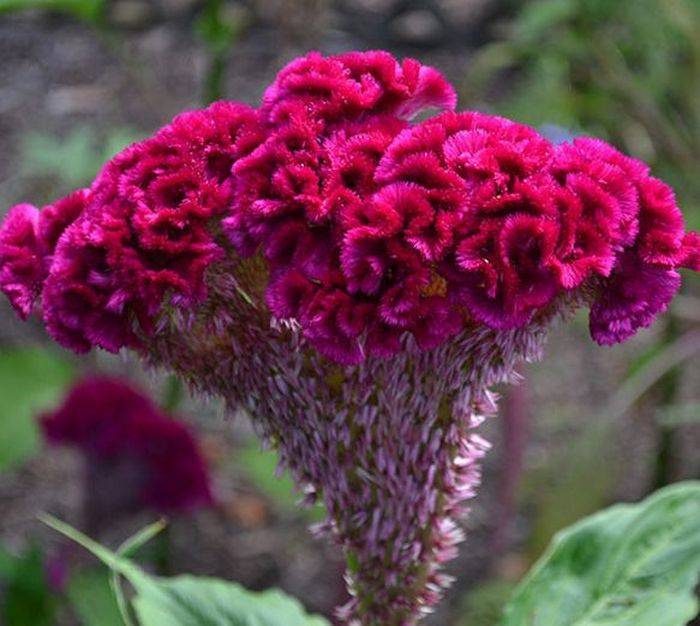
You can plant seedlings, those who live in warm areas can sow tiny seeds directly into the flower garden. In areas further north, plant only when the soil warms up before planting, otherwise, the plant itself may grow and stop flowering.

If you plan to grow cellosia outdoors from seeds, it is best to sow them in a partially shaded or sunny area of the garden until the last frost of spring. After the seeds are sown, they need to be slightly soaked, and the soil must be pre-prepared. In autumn, before planting cellosis, prepare the planting site by removing weeds and mixing organic matter into the soil.
Even sandy loam soils, considered ideal for most annuals, must have organic matter mixed each year to maintain a luxurious bloom. It is good to add aged cow dung, vermiculite and sand in equal parts. With increased acidity, lime is added.
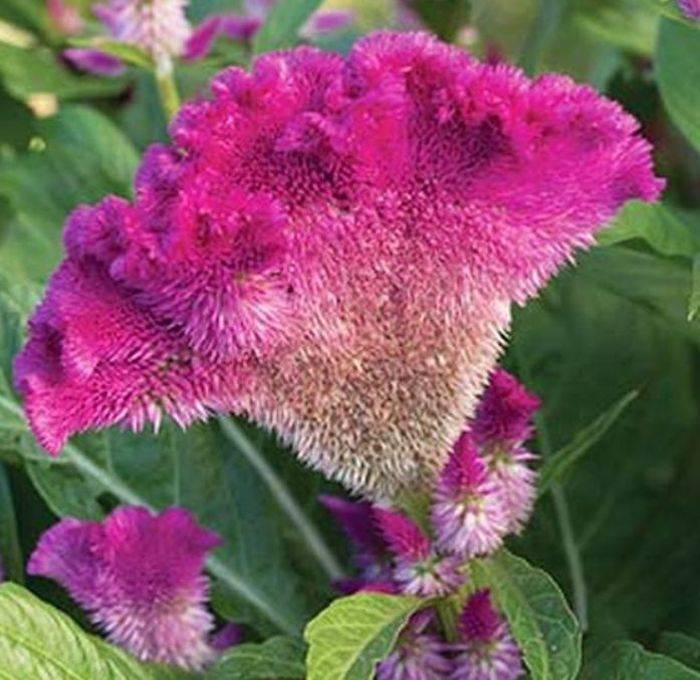
In the spring, sow at the end of March or April. To do this, make shallow grooves with a hoe and sprinkle the seeds not thickly, moisten them a little with water using a spray bottle. Cover with soil. If you are doing several rows, then you need to retreat 30-40 centimeters, or even more. From time to time, you need to moisten the crops until the first signs of obvious growth.
If you still decide to plant through seedlings, then it's a little troublesome. At the end of February, you can sow it in convenient trays. To do this, in fertilized soil, sow seeds in separate holes, or make indentations along the entire length of your tray. Sprinkle gently and sprinkle lightly with damp earth. After eight days, the first shoots will appear.
When leaving, you need to take care of them. When the sprouts are hardened, they must be dived into separate cups or right there in the tray. Also make sure that there is normal freshness but without direct sunlight and moderate humidity. Cover the soil surface with a film, which is completely removed after the first shoots appear. To plant in the soil depending on the climate, in the Crimea I plant after May 15, and where the soil has not yet fully warmed up, then plant later.
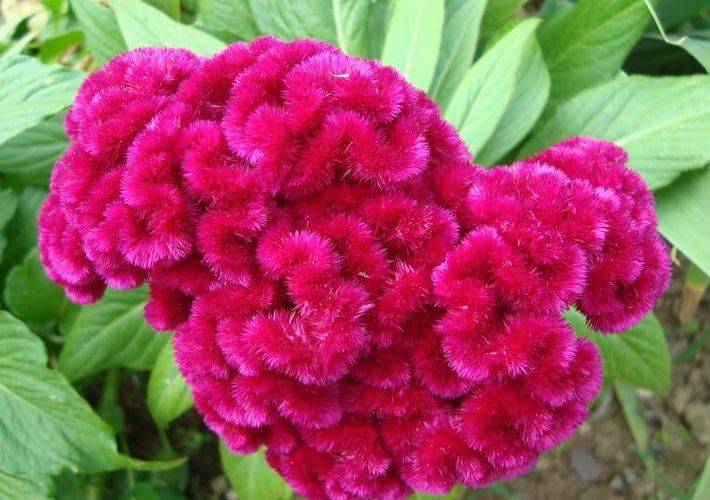
When leaving comb cellosis, you must remember the basic rules:
- Avoid temperature extremes, drafts, wind and stagnant water.
- Sprinkle with warm water and preferably early in the morning. Strong moisture can lead to root rot.
- Feeding with organic fertilizers twice a month throughout the growing season, overfeeding is also not permissible, since all the strength will go to the development of leaves and you will be left without beautiful flowers.
- Timely remove weeds around the bush and loosen.
Common varieties
Breeders are engaged not only in improving the aesthetic properties of flowers, but also in adapting them to our climate. Low temperatures remain detrimental to flowers, but their resistance to the weather of the middle zone has increased markedly. Therefore, most flower growers successfully work with numerous varieties of pinnate cellosia.
Among the varieties of low-growing paniculate celosia and dwarfs, the following are in demand.
- "Kimono" is a compact and low plant with a large globular inflorescence. Color - from white to cherry red, cream, yellow, orange.
- Glorias Mix is a variety with a wide range of bright color palette with excellent density and uniformity. Ideal for use in the decor of both streets and apartments.


The following varieties stand out from the medium-sized ones in popularity.
- "Fresh Onion" with golden yellow and flaming red inflorescences.
- "New Look" with large wide inflorescences of fiery red color.
- "Peacock" is an annual with ribbed emerald leaves. The paniculate inflorescences of its flowers have from orange and yellow tones to red shades.
Among the tall species and giant varieties, they are striking with a mixture of bright colors "Pampas Plume" and the variety "Summer fires" - a regular pyramidal bush with large paniculate inflorescences of yellow, pink and red.
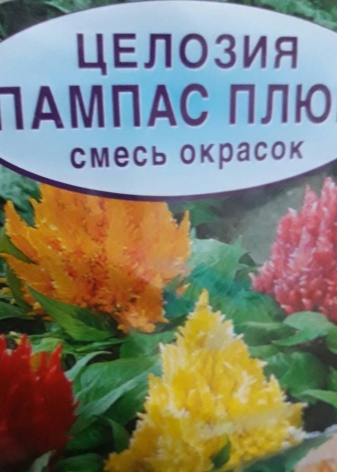
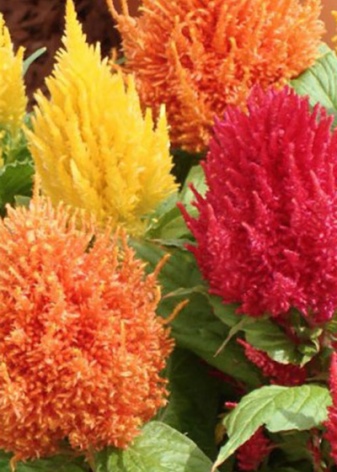
How to sow cellosis seeds for seedlings correctly: stages and diagrams
Correct planting of a crop involves several key steps. Let's consider each of them.
Soil preparation
The soil for seedlings of celosi should be loose, fertile, slightly acidic (pH 5.5-6.2). If a slightly acidic soil is not found, you can use a neutral one. A universal potting potting mix is suitable for flower seedlings.
Or you can prepare seedling soil with your own hands, for this mix:
- leafy or sod land (3 parts);
- river sand (1 part);
- humus (part 1);
- perlite or vermiculite (1 part).
It is very important to disinfect the seedling soil (steam it or bake it in the oven), and then spill the soil with biofungicide. It is advisable to do this 2-4 weeks before planting the seeds.
Disinfection of the soil mixture will eliminate unfavorable microorganisms, fungi (including molds).
Choice of capacity
Celosia seedlings do not tolerate picking and replanting well, therefore it is recommended to immediately plant seeds in individual containers, for example, cups or pots made of plastic, peat, plastic cassettes. The optimal diameter and height of the container is 7-8 cm. If you immediately plant it in separate volumetric containers, then you can immediately plant the plants in open ground by the transfer method, that is, keeping the earthen ball, thus, you can avoid damage to the root system.
However, sowing in a common container is also allowed: a wide and low (about 7 cm high) wooden or plastic box, or a food container.
Seed preparation
When buying seeds, be sure to read the information on the package. It contains information about the type and variety, the height of the plant, the color of the inflorescences. Study this data to determine if this type and variety is right for you. It is also recommended to buy seed from a trusted, reliable manufacturer.
It is not essential to prepare seeds for planting, since they germinate well without it. However, for a more friendly and faster germination, you can soak the seeds in a solution of a growth stimulator (for example, Epin, Zircon), process according to the instructions. After soaking, lightly dry them on a cloth or napkin and start planting.
Celosia planting scheme
Sowing cellosis seeds for seedlings at home is carried out according to the following algorithm:
- If not, make drain holes in the container.
- Put a drainage layer about 1 cm on the bottom, for example, you can put perlite, expanded clay.
- Fill the container with earth, leave a small gap between the edges of the container and the ground (the optimal distance is about 1.5-2 cm).
- Moisten the soil from a sprayer with warm water.
- Now you should sow the seeds of cellosis:
- If you are planting in individual cups or pots, then transfer 2-3 seeds with a toothpick. To do this, moisten the tip of the product, pick up the seed and brush it off with the tip of another dry toothpick. When the seedlings grow up, you will remove the weakest, leaving the strongest one.
- If you are sowing in a wide box, then you just need to sow the seeds evenly, keeping a distance of 3 cm between them. Again, to maintain a normal distance between them, you can transfer them with a toothpick.Or, bend a white sheet, pour seeds on the fold and use the sheet to scatter them over the surface of the soil, then thin out.
- Sowing cellosis is necessarily superficial! That is, the seeds cannot be covered with earth or buried in the soil. It is only necessary to lightly press the seeds to the surface of the ground.
- Water the soil again by spraying with a spray bottle.
Celosi varieties
Of course, it is interesting to consider the characteristics of the most common varieties of comb cellosia, which today can most often be found in indoor conditions or in personal plots, and which are especially popular and love from flower growers. Having analyzed the characteristics, it will be much easier to understand why this is so, and how these varieties and species differ from each other.
Let's start with an analysis of this variety, which is called Impress - this is a plant that has leaves painted in a bright light green hue. Inflorescences look very light, almost weightless, airy. The color scheme can be different, it ranges from a deep burgundy shade to a bright scarlet color of inflorescences. The height of the plant does not exceed twenty-five centimeters, it looks quite interesting and very compact. Looks great both as a single landing, and as part of a composition, a group landing.
Empress is the second grade, which is also of particular interest. This variety belongs to the undersized species, and at the same time it is very popular. The height of the plant barely reaches thirty centimeters; on the leaves you can see streaks painted in red. The buds are also very attractive - they have a purple hue and look gorgeous, especially when combined with such attractive, vibrant and incredibly decorative leaves.
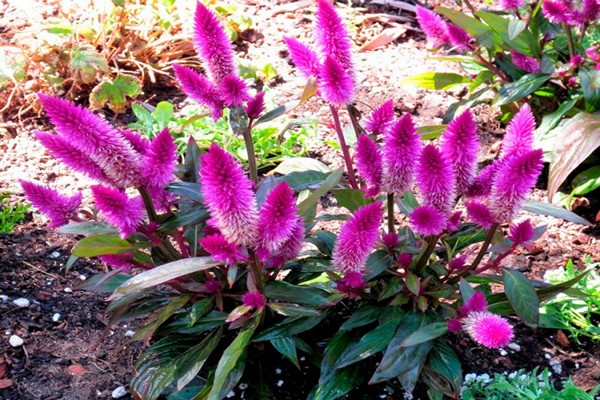
Atropurpurea - this celosia is distinguished by very large and incredibly heavy inflorescences, which are painted in bright shades and stand out from the total mass of plantings. The stem is colored in a pinkish tint, and the leaves look contrasting, since they are colored in a light green tone. The height of one plant reaches about twenty centimeters, the planting looks incredibly interesting and attractive just due to such bright and decorative indicators. Looks great in indoor plantings, and in flower beds, and in personal plots, so celosia in this regard is really very popular and in demand.
Coral garden - this variety belongs to the velvety variety, it can reach half a meter in height, therefore, it is usually this variety that is advised to be planted in a garden plot and in flower beds, since there the plant will feel freer, it will have more space for growth and development, the root system will be more likely to develop. The stems of this variety are very straight, rather fleshy, which makes them quite popular because of such strength indicators. At the same time, the inflorescences of this variety are very small, they look like scallops, they are incredibly attractive and bright in color. Look great in group plantings with other varieties, varieties of cellosis, or even with other representatives of completely different families and species. In addition, celosia is remarkably adjacent to other plantings, it is not demanding, does not deplete the soil unnecessarily, so it is an ideal option for planting in any conditions.
Fighting cellosis diseases at home
The most common disease that affects an ornamental plant is a black leg resulting from damage to the stem by the fungus Botrytis. Pathogens can be present in the soil even before the flower is planted, therefore, the soil must always be pretreated with special means. The cause of fungi can be moldy soil, increased acidity, poor loosening, overheating under the film, dense sowing of seeds, a large amount of humus, insufficient fresh air, infected grass.Insects can also carry fungi.
A symptom of the disease is the occurrence of black plaque on the stem. If the black leg is not removed in time, the flowers and root dry up and the plant dies.
To prevent the disease, the seeds of cellosis are treated with a solution of potassium permanganate before sowing, the remains of which are poured into the ground. Sometimes heat treatment is carried out by pouring boiling water over the ground.
In the event of a disease, the soil is loosened and sprinkled with charcoal ash. For processing, you can also use lime, soda solution, onion peel infusion.
Affected plants or parts of them must be removed from the flower bed to prevent further contamination of healthy shoots.
When aphids attack or chlorosis occurs, comb cellosis should be treated with special preparations.
Diseases and pests of the flower
At the very beginning of growth, with a large amount of water, a blackening of the stem may be found in the celosia. If a change in the color of the stem was found, then the soil should be urgently loosened and sprinkled with a layer of wood ash. At this stage, you should stop watering the flower until the stem is completely healed.
If a flower is located in the garden, various pests can attack it. It is especially common in silvery aphids. To get rid of it, you should use a solution of liquid soap, vegetable oil and water. By spraying plants with a liquid with such a composition, you can quickly get rid of all unnecessary pests and improve the state of cellosis.
Types of celosi flowers (with photo)
Of the many types of celosia for cultivation, Hatton's celosia (spike-shaped) and silver celosia are used. Celosia varieties are subdivided into short and tall varieties.
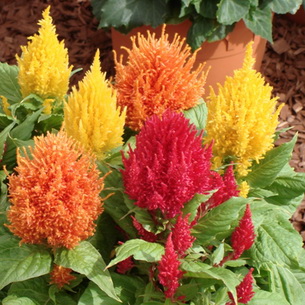

Hutton's celosia is a highly branching plant. It reaches a height of 60-100 cm. It blooms with spike-shaped inflorescences-panicles of different colors.

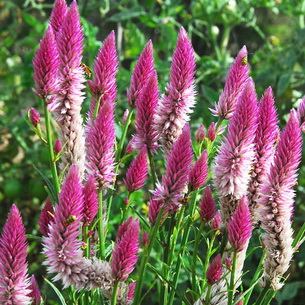
Celosia Hatton varieties Pink Flamingo have bushes 60 cm high, flowers from bright to pale pink color.

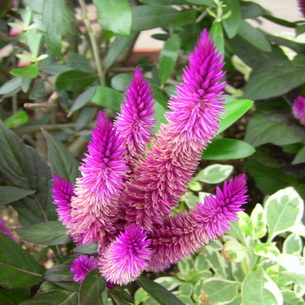
In the varieties Flamingo Feather and Flamingo Purple, the inflorescences differ in color saturation, as well as different periods from planting to flowering.
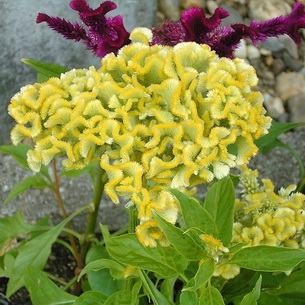
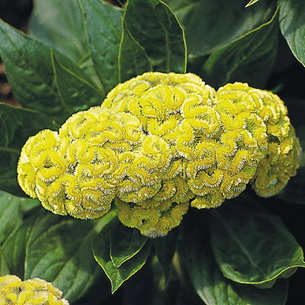
Celosia silvery pinnate is distinguished by lush panicle inflorescences, which can reach the size of the stem in length. The leaves, stems and flowers of this plant are of different colors.


Celosia of the Goldfeder variety, belonging to a silvery species, reaches a height of no more than 25 cm, has golden-yellow inflorescences.

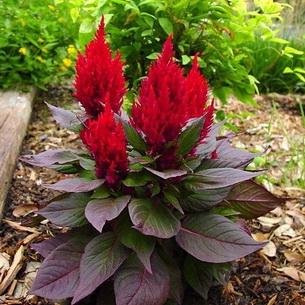
Celosia of the New Look variety has a height of 40 cm, the inflorescences are red and large.
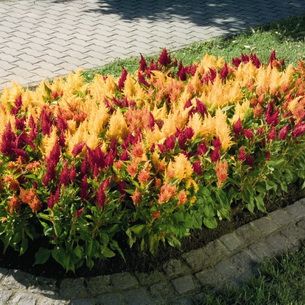
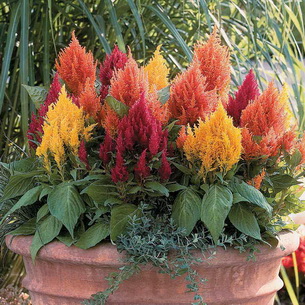
Fresh Look reaches a height of only 35 cm, and its inflorescences are bright red and golden yellow.
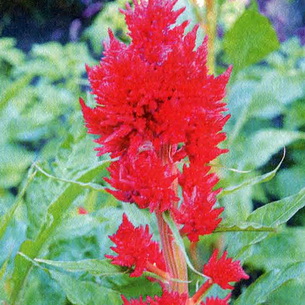
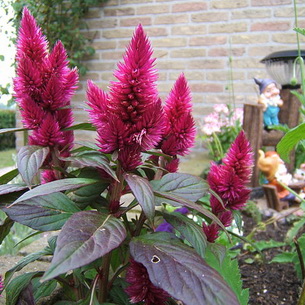
Celosia of the Feuerfeder variety is low (25 cm) and is distinguished by fiery red inflorescences.


Celosia of the Pampas variety has a height of 60–80 cm, and the inflorescences can be of different colors.
Look at the flower photo, where the brightest varieties and varieties are presented:
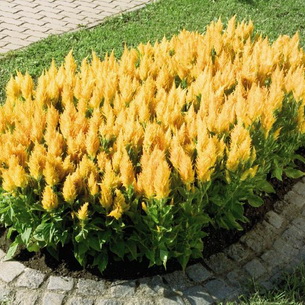
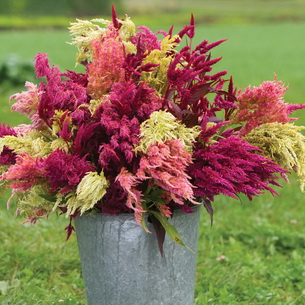


Celosia is widely used for the preparation of dry flower arrangements. After hanging dry in a dark, ventilated room, its yellow and red inflorescences retain their shape and color well.
Celosia silvery is an annual upright plant, with a strong, thick stem, height 20-100 cm; blooms from July to the first frost. It got its name from the Greek word "kelos" - burning, flaming. The inflorescences actually seem to be burning - they are so bright. By the shape of the inflorescence, consisting of small flowers, celosia is divided into two garden forms: pinnate, with paniculate inflorescences of yellow, orange, salmon, bright red, purple, less often cream in color, and comb, which received its name for the original thick inflorescence in the form of a ridge ... Celosia looks great both in flower beds and in bouquets. It is planted on balconies, ridges, in containers.
Celosia silvery comb, or Cockscomb (Celosia Argenteal. F. Cristata (L.) Kuntze).
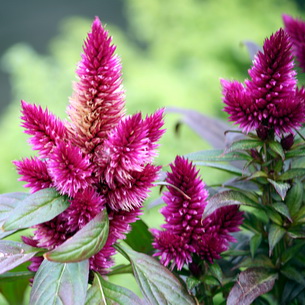

Annual herb up to 70 cm high.Stems are erect, often fused (fasciated), juicy. Leaves are oval, pointed, green, variegated or dark purple. The flowers are small with yellow, orange, pink and mainly purple-red perianth, collected in a massive inflorescence with more or less large, deep convolutions along the upper edge, reminiscent of a cockscomb. Blooms from early July until the first frost. Sets seeds abundantly, but they do not fully ripen.
Silver crested celosia is usually grown as an annual plant. Its inflorescences are similar to a cockscomb. In color, they are purple, pink, yellow. The coelosis of this Coral Garden variety reaches a height of only 30–40 cm, and its inflorescences are varied in color. Celosia of the Chief Series grade is higher - 80–100 cm, with large inflorescences of red, pink, yellow. The Jewel Box Series is characterized by a small height (up to 15 cm) and inflorescences of red, carmine and yellow.
Celosia silvery pinnate (Celosia Argentea L. F. Plumosa Voss.).
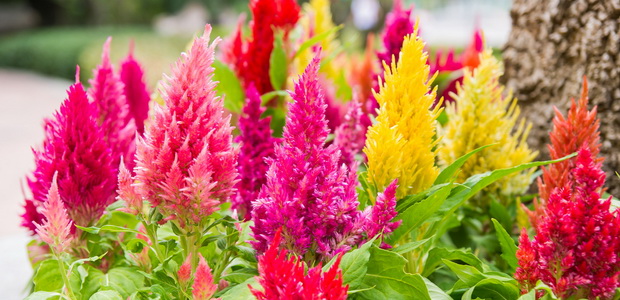
An annual herbaceous pyramidal plant up to 100 cm high. Stems are straight, fleshy, ending in large, paniculate inflorescences. The flowers are small, silvery, shiny, dry, collected in spike-shaped cylindrical inflorescences, located both at the top of the stem and in the leaf axils. Leaves linear-lanceolate or nearly linear on short petioles.
The varieties are distinguished by the color of the inflorescence (golden yellow, silvery yellow, fiery red and others) and the height of the plant.
Cockscomb of Celosia
Celosia in our country is more often found as a houseplant, since it can live and develop at a temperature of at least 14 degrees Celsius. Its inflorescences, similar to cockscombs, cannot be served to the table, but young leaves are eaten in many countries.
Genus Celosius
Plants of the genus Celosia are valued for their original flowers, which have chosen two elegant colors for themselves: red and yellow. They, like perky cockerels, ready at any moment to break loose and join the battle, proudly sit on peduncles or in the axils of green leaves. In a small-sized plant there is so much charm and brightness that it is impossible to remain indifferent to the creation of nature.
In its homeland, in the tropics, a plant can live in one place for many years. But, in our harsh lands, Celosia is grown as an annual plant. This adds magnetism and popularity to the flower, without being intimidated by the time spent caring for the plant. The result is worth it.
Two annual popular species
Of more than sixty species of celosia, two annual herbaceous species fell to our yard. Both species have the adjective “silvery” in their name, and the different shape of the flowers added to each species one more adjective: “comb” and “feathery”.
Celosia silvery comb
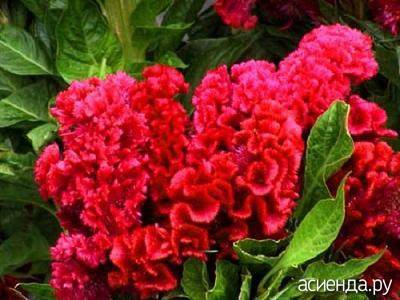
Silver comb celosia (Celosia argentea f. Cristata), which in Russia is affectionately called "Cockscomb", forms a bush of half-meter stems. Stems are covered with green or bronze broad-lanceolate leaves.
The entire summer season, if you plant the cellosia in open ground, protecting it from bad weather, the plant will delight with its bright amazing inflorescences. Yellow, purple, red, salmon small flowers, collected in dense inflorescences on a peduncle, which nature gave the shape of a cock's comb, are unique and irresistible.
For growing in pots, undersized forms were bred, the height of the bushes of which does not exceed a quarter of a meter.
Celosia silvery pinnate

Silver feathery celosia (Celosia argentea f. Plumose) is also called "Amaranth plumose". Indeed, with a cursory glance at the inflorescences of celosia pinnate and amaranth, which we call "Shchiritsa", we can conclude that this is one and the same plant. But this is only at a cursory glance. Meticulous botanists see much sharper, and therefore planted these plants on different shelves.
Let me remind you that recently scientists put Shiritsa on the pedestal of the Panacea for disease and world hunger. Its reserves of substances useful to humans amaze the imagination, and its rather simple care during cultivation attracts more and more people who want to breed an assortment in the garden.
But, back to the feathery cellosis. The height of its bushes, as a rule, is 30-40 centimeters, but there are also tall varieties that take an example from the squid and grow up to meter heights.
The green leaves of celosia silvery pinnate have a lanceolate or ovoid shape. Large inflorescences-panicles, pleasing with bright colors, do not leave flower stalks from June to August.
Growing

We select a place for a tropical plant, illuminated, but not under the incinerating rays of the hot summer sun.
The soil for full growth should be fertile, non-acidic, preventing water from stagnating and producing parasitic microscopic fungi that love to feast on the roots and leaves of the plant.
Do not forget that celosia loves warmth, and therefore we plant it only after all the belated frost attacks are exhausted. Or we take protective measures.
Do not overdo it with watering, resorting more often to spraying that does not touch the inflorescences.
Reproduction
Propagated through seedlings, sowing seeds in February. The grown seedlings are planted in personal pots.
In areas with a mild climate, seeds are sown directly into open ground.
Diseases and pests
The gluttonous aphid, familiar to all, will not escape celusion.
When busting with soil moisture, it can be affected by fungal diseases.
With a lack of iron in the soil, it becomes sick with chlorosis.
Cellosis facts
- Since ancient times, silver celosia has been used as a food plant in Indonesia, India, Nigeria, and Central America. Celosia has edible young leaves and plant shoots.
- From the seeds of scallops, cellosic oil is extracted.
- In folk medicine, celosia is used to expel worms, to treat blood diseases, mouth ulcers, and vision problems.
- Silver celosia (lat.Celosia argentea) is actively grown as a garden ornamental plant (usually as an annual used to organize borders), as a plant for cutting, and also as a pot plant.
- Celosia silvery was introduced into the culture during the Renaissance, so it has long become a common plant for European gardens.
- The varieties of silver celosia are divided into two groups: the Plumosa group includes varieties with inflorescences in the form of a plume of small deformed flowers of various colors (plants of this group are grown for cutting); to the Cristata group - varieties with inflorescences in the form of wavy ridges from accreted shoots.

